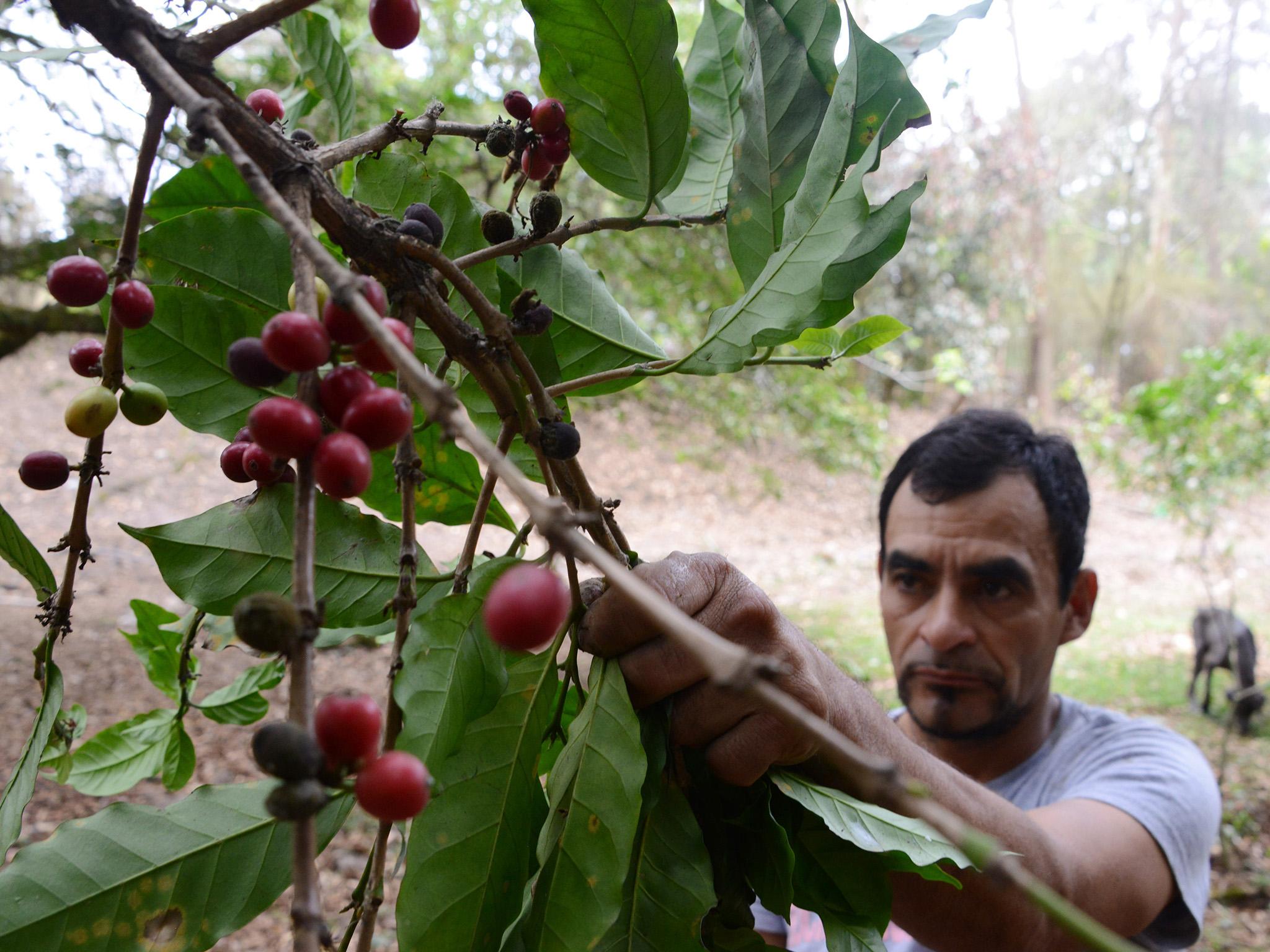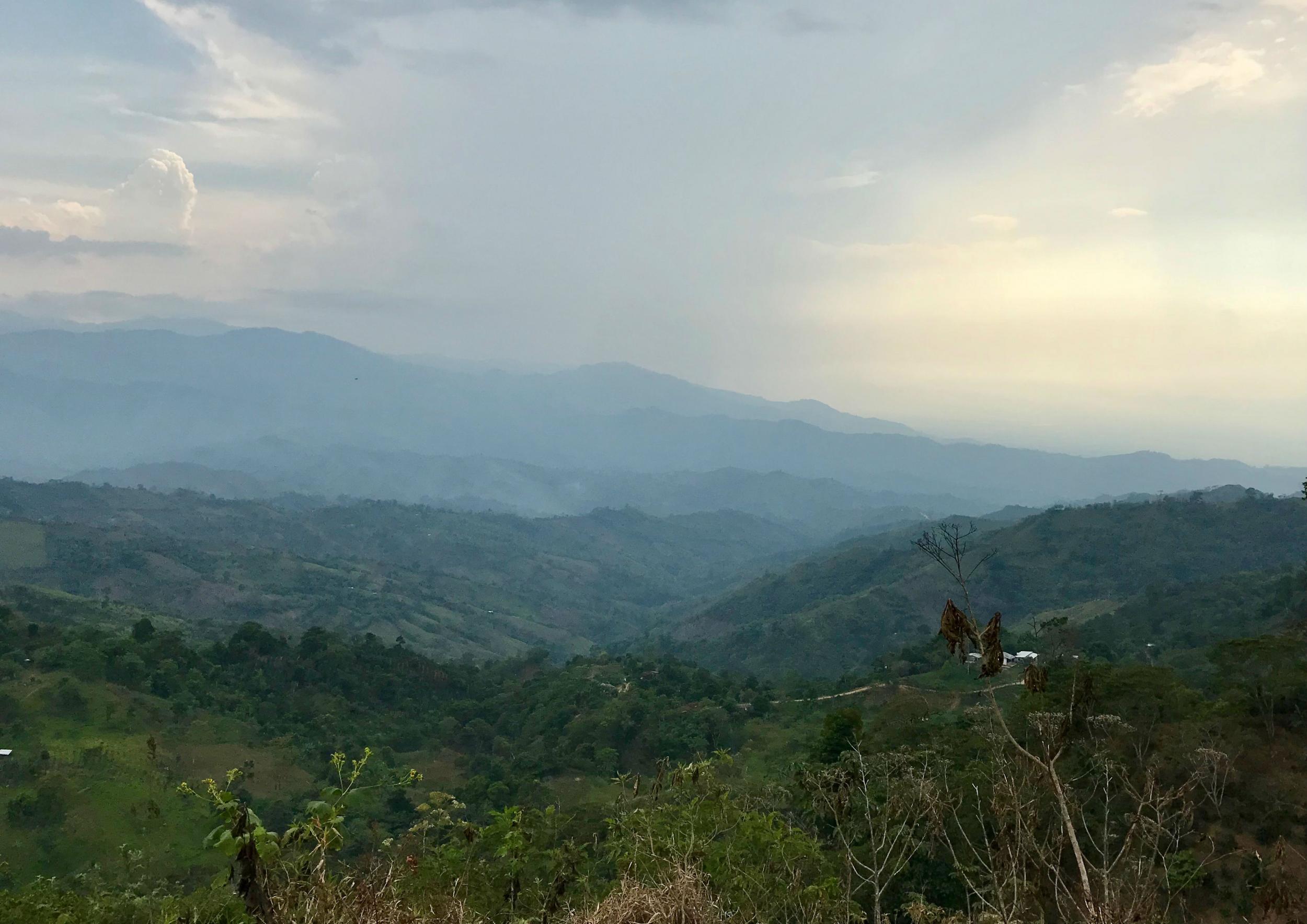Honduras: Where climate change and mass migration have created a village of women
Beyond the Border: In the second part of a series from Honduras, The Independent investigates the factors driving migration northwards to the US
Your support helps us to tell the story
From reproductive rights to climate change to Big Tech, The Independent is on the ground when the story is developing. Whether it's investigating the financials of Elon Musk's pro-Trump PAC or producing our latest documentary, 'The A Word', which shines a light on the American women fighting for reproductive rights, we know how important it is to parse out the facts from the messaging.
At such a critical moment in US history, we need reporters on the ground. Your donation allows us to keep sending journalists to speak to both sides of the story.
The Independent is trusted by Americans across the entire political spectrum. And unlike many other quality news outlets, we choose not to lock Americans out of our reporting and analysis with paywalls. We believe quality journalism should be available to everyone, paid for by those who can afford it.
Your support makes all the difference.They call it the village of women, but the name is not entirely accurate.
There are some young boys and older men, along with a handful in their prime. But officials say women now make up at least 75 per cent of La Cumbre, with dozens of their husbands, brothers and sons having left in search of work in the US. More depart every day, their first stop being the border with Guatemala, marked by the Motagua river, which flashes over the hills like a necklace of jewels.
Life amid these coffee plantations has never been easy. But in recent years, a new challenge has beset villagers: climate change. Locals say that for the last decade there has been insufficient rainfall to ensure a decent harvest. This, on top of fungal blight and the low price of beans, has pushed many to the edge. Thousands have borrowed the $5,000 demanded by a coyote, or people smuggler, to get them to the United States. That fee is said to be good for three attempts.
Vincente Madrid Norrriega, deputy mayor of Trascerros (the municipality 60 miles west of San Pedro Sula to which La Cumbre belongs), estimates the area’s total population has fallen from 10,000 to 7,000 in the last couple of years. La Cumbre’s has been slashed to 450, from 700 in 2012.
“The migration always used to happen, but over the last two years it’s really increased,” he says, sitting in his office in the neat town centre. “We are worried. We can’t be without people in this area.”
The impact of the sudden departure of 30 per cent of the population has been dramatic. Businesses have shut, shops have closed. “This last year, we had 52 school teachers. Now it’s down to 22 – this is because there are fewer students.”
The migration has been felt in other ways. Parents are upset when their children declare they are leaving, fearful about the dangerous, sometimes deadly journey they are about to undertake. People are saddened when they no longer see their friends. Business owners fear they could be next to go under. And a general sense of ill anxiety hangs over the town.
Of those who left, perhaps 200 have returned to the area around Trascerros, either voluntarily or having been deported. In 2018, the US Immigration and Customs Enforcement agency, known as ICE, deported 28,894 Hondurans – the equivalent of 80 people a day.
“The government has abandoned the city. For years we have been asking them to build roads, but they don’t want to help,” says Norrriega.
Honduras is at the very nexus of Central America’s migration crisis. A series of human caravans that last year made their way towards the southern US border were made up overwhelmingly of citizens of this country of 10 million people, along with some from El Salvador and Guatemala.
Donald Trump, who has placed a tough anti-immigration policy at the centre of his race-baiting re-election strategy, termed the caravan “an invasion” and warned the people of Honduras via Twitter “our military is waiting for you”.
Such words have not deterred people who sense they have nothing to lose in leaving a place beset by economic problems, with a dire lack of opportunities for young people, and endemic gang violence.
This part of the country has always depended on coffee for its income, but it can no longer do so. Firstly, six years ago, the coffee was struck by fungal blight, then in 2016 the world price for beans plummeted to its lowest since 2006, the result, according to industry experts, of an overproduction of lower grade coffee, especially by countries such as Brazil.
Now, people are also having to confront extreme weather.
Norrriega says for nine years the weather pattern has shifted, and there has not been enough rain for the beans to completely grow, and they can remain hard. Farmers now need double the amount of beans they previously required to fill a sack to take to market. “It’s climate change. People are talking about it a lot.”

On a shaded terrace above the town, Jorge Ardon, a 40-year-old coffee farmer, reveals what the beans look like when they do not get enough water – hard, and tough to the point of being shrivelled.
Ardon believes one reason for the drop in rainfall was the logging of trees several decades ago. “Another factor is climate change.”
One unforeseen impact on the industry on which “100 per cent of people depend on”, has been an increase in gang activity in a town that previously had none. “There are groups that try to do extortion. This has only been the last couple of years.”
A 2017 report by the US Agency for International Development, said the “impacts of climate variability are already significant in Honduras”. It said this had triggered “acute food insecurity, malnutrition and mass migration to poorly prepared urban areas”.
The problem created by climate change and extreme weather is not unique to Trascerros, or indeed, Honduras. In Lempira, a coffee growing area in western Honduras that is part of the “dry corridor” that reaches from southern Mexico to Panama and is the focus of international efforts to counter the lack of rainfall, thousands of farms have reportedly closed. Left with no alternative work, huge numbers have migrated.
Last year, a report by the World Bank said the amount of land suitable for growing coffee in Central America could fall by 40 per cent by 2050, and that 1.4 million people may be forced to leave their homes. In Honduras, an estimated 1 million people work in the coffee industry, according to Dutch food security researchers at Wageningen University.
“Climate migration will not occur in isolation, and the subregion will also see a marked increase in the number of other internal migrants driven by economic, social, or environmental reasons,” said the World Bank report.
Stephanie Leutert, director of the Mexico Security Initiative at the University of Texas at Austin, has been interviewing migrants who joined the caravans and compiling data on where they come from. She says many spoke of unpredictable weather as the reason they left the land. “They talk about climate change like it’s a tax.”
She says data released by the US Customs and Border Protection agency of people apprehended by agents at the US-Mexico border shows that the number of people from Lempira, Honduras’s main coffee region, had more than doubled from 2017 to 2018. Others unable to make a living from the land move to cities such as Tegucigalpa.
La Cumbre is accessible only by a jarring, rutted track. It feels as hushed as a cathedral. There is little traffic, barely any movement. There is none of the bustle usually associated with a community in this region. Many homes are empty, their doors bolted shut. The small church sees far fewer people at its services than even a few years ago.
Since her husband left a year ago, entering the US with the help of a coyote, Marcia Elena Pineta has been taking care of their small shop, and caring for three daughters, aged five, seven and 13. Her husband works in construction and sends money home, but life is not easy.
“He left because you can work here and never see the benefits. He said, ‘I need to go there and work to help my family,’” she says, her youngest daughter Roxanne perched on a knee.

She says she speaks to her husband every day using WhatsApp, but it is not the same as having him there. His life in the United States is also difficult.
“We don’t talk about how long he will stay. It’s up to God,” she says. “It’s very hard, but with God’s help you carry on. The community feels very different. I don’t think people will stop leaving.”
Another woman, Antonia Reaz, says her husband left two weeks ago with their 14-year-old son. People in the village say they believe having a child with them increases their chances of being permitted to enter the US if they are stopped.
The woman’s husband and son were detained almost immediately. She sobs as she holds a photograph of her boy, Madondo Lopez, a bright smile on his face, as he graduated from the school’s sixth grade, a couple of years ago. She says she has not heard from them and is gnarled with worry.
Somehow, she has to find a way to take care of her three daughters. “Right now, I have all the responsibility because he went away,” she says, her eyes locked downwards.
“At the beginning, I did not want him to go. I said: ‘We have no relatives there.’ But then some of our relatives reached there, so we took the decision.”
Asked if she too wishes to go the US, her answer comes back rapid-fire fast. “I don’t want to go. That is not my dream.”
Freddie Vasquez, 56, is among the few men of working age in La Cumbre and he is considering leaving. He is married and has eight children – six sons and two daughters. Some are working in Guatemala.
“If you go to the US, you can make money to buy land or cattle,” he says. “But there are a lot of challenges there; if you lose your focus, you can lose your way.”
Vasquez and other villagers say La Cumbre has changed dramatically. There are fewer boys in school. Women now in charge of the family’s land have to pay men to do work previously carried out by their husbands or relatives.
The physical appearance of the village has also changed. It is easy to spot the homes of people whose relatives have made it to the US and send money back. Fresh paint, new doors, even new rooms. These families eat better food.
Among the nicest homes is that of Belsis Lopez. Her husband travelled to the US in the summer of 2016 with a brother, and lives in a state where it appears many men from this village ended up. He works building roofs and sends money home regularly – something that has enabled her to improve their house.
But she says her three children – two daughters aged 12 and 17, and a 14-year-old son – would rather their father was back with them.
“Every day I talk to him. He needs to return,” she says quietly, standing outside their brightly painted home.“He went because of the economic situation, but I was rather he was here.”
Additional reporting: Paulo Cerrato in La Cumbre
Read the first part in the Beyond the Border series here: Honduras: Inside ground zero of the Central American migrant crisis

Join our commenting forum
Join thought-provoking conversations, follow other Independent readers and see their replies
Comments